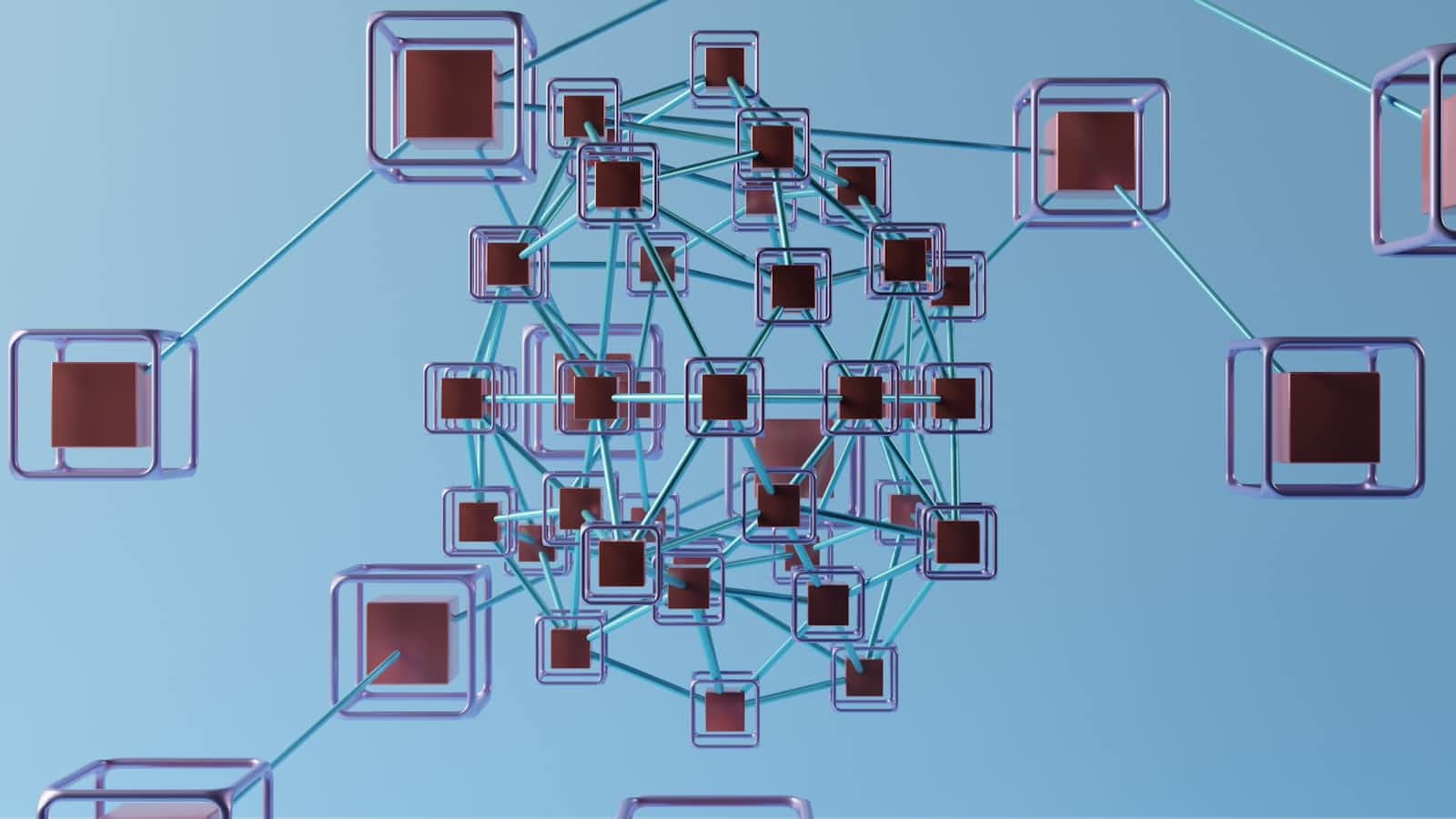Web3 Simplified
 Jadesola Adeagbo
Jadesola AdeagboTable of contents
- The History Of The Web
- What is blockchain technology?
- How does blockchain technology support Web3?
- Major types of DApps (Decentralized Applications)
- 1. Decentralized Finance (DeFi) Platforms (e.g., Uniswap, Aave, Compound)
- 2. Cryptocurrencies (e.g., Bitcoin, Ethereum)
- 3. Decentralized Autonomous Organizations (DAOs)
- 4. NFT Marketplaces (e.g., OpenSea, Rarible, SuperRare)
- 5. Web3 Storage Solutions (e.g., IPFS, Arweave, Filecoin)
- 6. Game Finance (GameFi, e.g., Axie Infinity, Decentraland, Sandbox)
- 7. Decentralized Identity and Authentication (e.g., ENS, uPort)
- Use Cases of blockchain technology
- Shortcomings of Blockchain Technology
- Conclusion

Understanding what Web3 is all about can be challenging, especially for someone who may not be tech-savvy, and if you feel that way, you are not alone. It also took me a lot of time to understand, which is why I am here to make the journey easier for you, so please keep reading.
Understanding Web3 without understanding the evolution of the Internet itself may be difficult, so let’s start from there:
The History Of The Web
Web 1.0
In 1989, British scientist Tim Bernes Lee, working at Conseil Européen pour la Recherche Nucléaire (CERN), proposed a system for sharing information between computers, which is known today as the World Wide Web. The first version of the World Wide Web went live in 1991 and gave rise to what we now call Web 1.0.
In 1993, the web became even more popular with the creation of the first graphic web browser known as Mosaic. This development helped the internet become more widely known and accessible, laying the foundation for a more interactive web.
Web 1.0 was primarily used for the purpose of sharing information, which means that websites were static and read-only.
Web 2.0
The need for being able to do more than just read content on websites began to arise in the late 1990s. Users wanted websites where they could interact, share ideas, and engage others.
In the early 2000s, AJAX (Asynchronous JavaScript and XML) was developed and it enabled web pages to update dynamically without reloading. JavaScript frameworks and databases were also incorporated into websites that allowed them to store data and have interactive features like comments and real-time notifications.
This evolution paved the way for cloud computing, which enabled applications and services to run on remote servers instead of local devices. This made it easier for companies to scale services for millions of users and store massive amounts of data, which were stored on centralized servers.
This advancement in technology led to the rise of blogs, forums, and comment sections and eventually fueled the growth of social media platforms like Facebook, LinkedIn, Instagram, WhatsApp, etc.
Unlike Web 1.0 with static websites, Web 2.0 introduced read-and-write websites, where users could not only read web content but could also write and interact with websites.
Web 3.0
While Web 2.0 brought significant changes, it had its shortcomings. Although people could read and write data, they didn’t have control over ownership of their own data. Additionally, the centralized nature of Web 2.0 made users’ data susceptible to breaches, censorship, and limited privacy.
For instance, have you ever made a post on Instagram and had it deleted by them because it supposedly did not follow their guidelines? Yeah, that’s the kind of control centralized platforms have over user content, and that is just one out of the many limitations of Web 2.0.
Powered by blockchain technology, Web 3.0 allows users to have true ownership of their data and digital assets, allowing them to control how their information is used and shared.
What is blockchain technology?
Blockchain is a digital, distributed, and decentralized system that stores information across multiple computers in different parts of the world. Instead of being stored on a central server, data is stored in blocks across a network of computers called nodes, with each block cryptographically linked to the one before it, forming a chain.
Applications that run on the blockchain network are called DApps (Decentralized Applications). DApps and smart contracts further enhance autonomy by removing the need for intermediaries, enabling secure, direct transactions between users.
How does blockchain technology support Web3?
Decentralization and ownership of data: The decentralized nature of Web3 applications built on the blockchain allows users to have control of their data. Data is stored on a distributed peer-to-peer network, which allows users to maintain ownership as their information cannot be changed from a general server.
Data Security and Transparency: The blockchain transparently records every transaction and piece of data on the blockchain on a public ledger. The open record makes the data secure and tamper-proof.
Smart Contracts: A smart contract refers to self-executing code that will run when predefined conditions are met. These contracts enable decentralized applications to run independently.
Tokenization and Ownership: Blockchain allows for digital assets, such as NFTs (Non-Fungible Tokens) or cryptocurrencies, to be tokenized. This tokenization provides users with verified ownership, backed by the blockchain’s immutable records. It enables digital assets to be securely owned, traded, and transferred, empowering users with true control over their assets and supporting new economic models like play-to-earn gaming and decentralized marketplaces.
Major types of DApps (Decentralized Applications)
1. Decentralized Finance (DeFi) Platforms (e.g., Uniswap, Aave, Compound)
DeFi is an inclusive term for any application that uses blockchain and cryptocurrency techniques to offer financial services like lending, borrowing, and trading.
2. Cryptocurrencies (e.g., Bitcoin, Ethereum)
Cryptocurrencies are digital currencies that operate on the blockchain network, enabling peer-to-peer transactions directly without intermediaries, making them faster and more effective.
3. Decentralized Autonomous Organizations (DAOs)
DAOs are community-governed systems on the blockchain where members vote, manage resources, ownership and make decisions using smart contracts.
4. NFT Marketplaces (e.g., OpenSea, Rarible, SuperRare)
NFT Marketplaces allow people to create, buy, sell, and trade Non-Fungible Tokens (NFTs), which are digital tokens representing ownership of one-of-a-kind assets like artwork, music, and collectibles.
5. Web3 Storage Solutions (e.g., IPFS, Arweave, Filecoin)
Platforms like Filecoin, IPFS (InterPlanetary File System), and Arweave offer decentralized data storage, distributing files across a blockchain network rather than relying on a centralized server, making data more secure and censorship-resistant.
6. Game Finance (GameFi, e.g., Axie Infinity, Decentraland, Sandbox)
Gaming Platforms introduce the concept of Play-to-Earn (P2E), which allow players to earn digital assets and interact in virtual worlds with assets secured on the blockchain.
7. Decentralized Identity and Authentication (e.g., ENS, uPort)
Decentralized identity solutions aim to give users control over their online identities. ENS (Ethereum Name Service) provides user-friendly domain names that link to blockchain addresses, while uPort allows users to create, manage, and share verified credentials without relying on centralized systems for identity verification.
Use Cases of blockchain technology
Blockchain technology offers a lot of solutions due to its transparency, security, and reliability. Here are a few use cases of blockchain technology:
1. Financial Services and Payments
Blockchain enables faster, cheaper, and borderless transactions. For example, Ripple and Stellar are blockchain networks designed to facilitate instant cross-border payments, reducing fees and delays associated with traditional banks.
2. Supply Chain and Logistics
Blockchain provides a public, immutable ledger that records information. Each step in the supply chain of a product can be tracked, giving proof of the authenticity of products. Projects like IBM Food Trust use blockchain to track food from farm to table, ensuring food safety and authenticity.
3. Voting Systems
Blockchain-based voting systems can ensure secure and transparent elections, where each vote is recorded on a tamper-proof ledger. Voatz is an example of a blockchain voting app used in pilot elections to provide a secure, transparent voting process.
4. Intellectual Property and Copyright Protection
Blockchain can establish proof of ownership and track usage rights through the use of NFTs. Platforms like Audius (for music) and Verisart (for digital art) protect intellectual property by creating verifiable ownership records on the blockchain.
5. Real Estate and Property Management
Blockchain can store and verify property ownership, allowing for quicker and more secure transactions. Companies like Propy use blockchain to simplify real estate transactions, making property transfers transparent and efficient.
6. Healthcare and Medical Records
Blockchain could be used to ensure secure, unified access to patient records. Medicalchain and BurstIQ allow for patient data to be securely stored, accessed, and shared with authorized providers, improving care coordination and data integrity.
7. Data Storage and Cloud Computing
Decentralized storage on blockchain offers secure, tamper-proof data management. A solution like Filecoin allows individuals and organizations to store data securely in a distributed manner, reducing the risk of data breaches and enhancing data accessibility.
8. Insurance and Claims Processing
Smart contracts on the blockchain can automate claims processing, reducing human error and speeding up payouts. Etherisc uses blockchain to automate insurance claims, enabling faster and more transparent processing.
Shortcomings of Blockchain Technology
Current blockchain infrastructure struggles to handle large transaction volumes quickly, which may lead to slow processing times and higher transaction fees during peak usage.
The need for users to understand several concepts to interact with Web3 applications creates a steep learning curve for Web3.
Different blockchain networks lack compatibility with each other, making it challenging to transfer assets or data across platforms. This reduces the ease of integrating various Web3 services
The absence of clear regulations backing Web3 makes it risky for developers and investors to invest in.
Although blockchain is secure, smart contracts and dApps can contain bugs or be exploited by malicious actors, which can lead to significant financial losses, damaging trust in Web3 applications, and deterring potential users.
Even though blockchain transactions are transparent and pseudonymous, they can be traced back to users with enough data, making privacy difficult to achieve.
Conclusion
This article covers just the basics of Web3 and blockchain, but it is noteworthy that this technology offers endless possibilities. While Web3 may feel complex and overwhelming to a beginner, it becomes clearer and easier to grasp with time, study, and research, so there’s nothing to worry about.
Thank you for reading! If you found this article helpful and informative, please subscribe and give it a like; it helps support the content and keep you updated with future posts.
Subscribe to my newsletter
Read articles from Jadesola Adeagbo directly inside your inbox. Subscribe to the newsletter, and don't miss out.
Written by

Jadesola Adeagbo
Jadesola Adeagbo
Hi🙋🏽♀️, I'm Jadesola, a software developer based in Nigeria 🛠️. Driven by a passion for solving problems with code, I'm currently refining my skills as a front-end developer while delving into the world of back-end development. I am dedicated to sharing my knowledge and experience as I grow in the tech world. Join me on my journey and let's grow together!